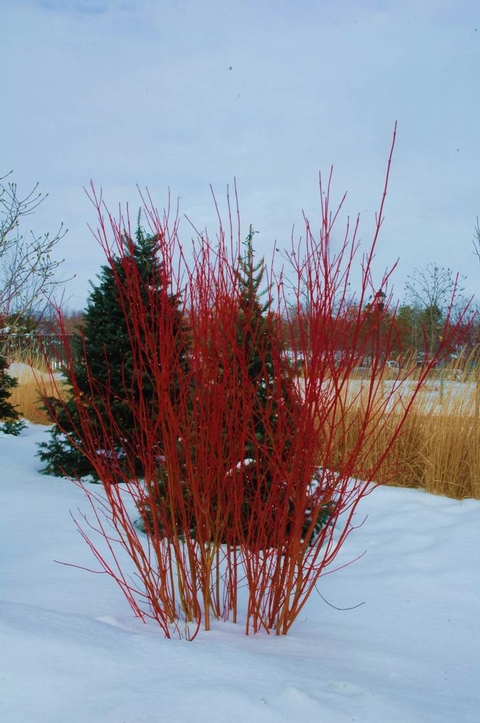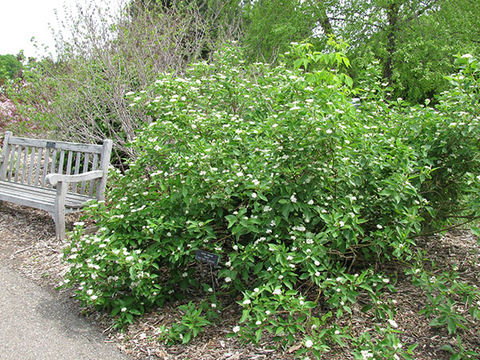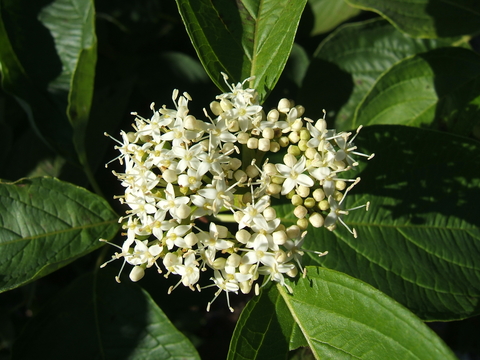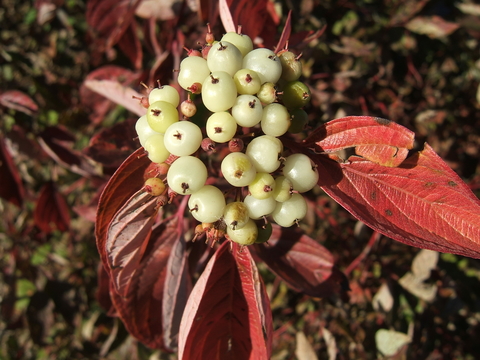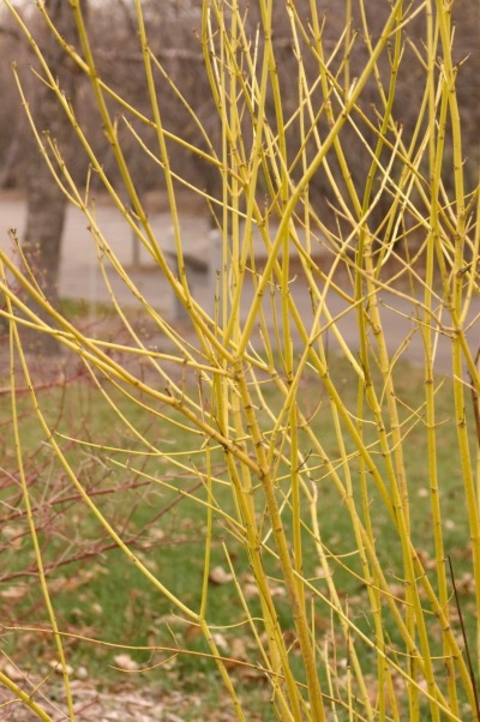(Cornus sericea) is a shrub native to Minnesota with colorful red or yellow winter bark that provides great winter interest.
As a landscape plant, redosier dogwood is extremely versatile.
It can be used as an accent, specimen or key plant, and in groups and large masses for borders and screens.
Redosier dogwood is also used in plantings for wildlife as its berries attract and are eaten by birds and mammals.
Because of its native status, soil adaptability and tolerance of flooding and wet soils, redosier dogwood is also used along shorelines and in rain gardens.
Description
-
Deciduous shrub
-
Height: 2 to 10 feet
-
Width: 2 to 10 feet
-
Fast growth rate
-
Broad, rounded, mounded form
-
Clusters of small, 4-petaled, white flowers in mid-May to June; second bloom occurs in July and August
-
Small, round, white to pale blue berries July through September
-
Fall foliage is red-purple
Growing redosier dogwood
-
Hardiness zone: 2 to 7
-
Sun to part shade
-
Adaptable to sandy, loam, or clay soils
-
Average to wet soil; drought tolerant
-
Adaptable to very poor to well-drained soils; soil compaction tolerant
-
Soil pH: 6.1 to 8.5; have your soil tested by the U of M Soil Testing Lab
Common problems
-
Salt sensitive
-
Suckers may need to be removed to maintain plant width
Visit What's wrong with my shrub? – Dogwood for a list of the most common pests in Minnesota.
Pruning to maintain color
In late summer, younger stems turn to red or yellow-green and color intensifies throughout winter.
The brightly-colored bark occurs on stems that are less than 3 years old, so renewal pruning should be a regular practice.
Remove the oldest third of stems down to the base of the plant every year or two to promote growth of the younger, colorful stems.
Visit Pruning trees and shrubs to learn more about the pruning process.
Cultivated varieties of redosier dogwood for Minnesota
Red stem varieties
-
'Alleman's Compact' - 5 feet tall by 5 feet wide, good fall color, compact form
-
'Cardinal' - 10 feet tall by 10 feet wide, good fall color; 1986 UMN introduction
-
First Editions® Firedance™ - 4 feet tall by 5 feet wide, good fall color, compact form
-
'Isanti' - 6 feet tall by 10 feet wide, good fall color, compact form, hardy to zone 2; 1971 UMN introduction
-
'Kelseyi' - 3 feet tall by 3 feet wide, compact form
Yellow stem varieties
-
'Flaviramea' - 8 feet tall by 10 feet wide, red-purple fall foliage
-
'Silver and Gold' - 8 feet tall by 10 feet wide, green and creamy white variegated foliage
Reviewed in 2018


